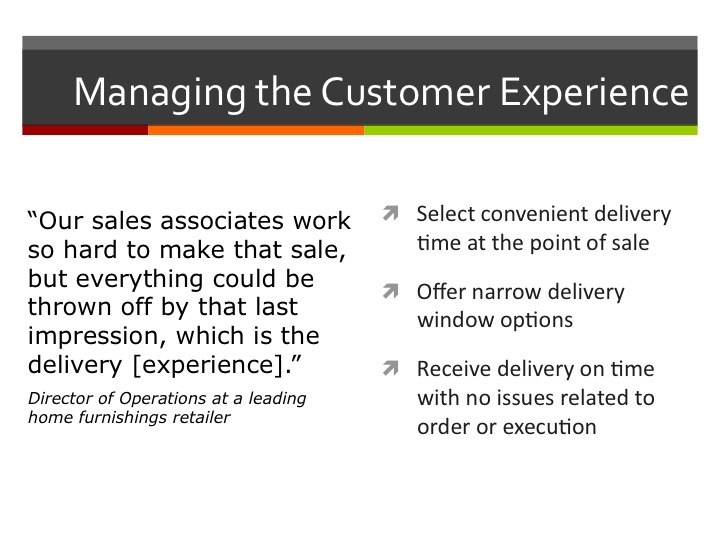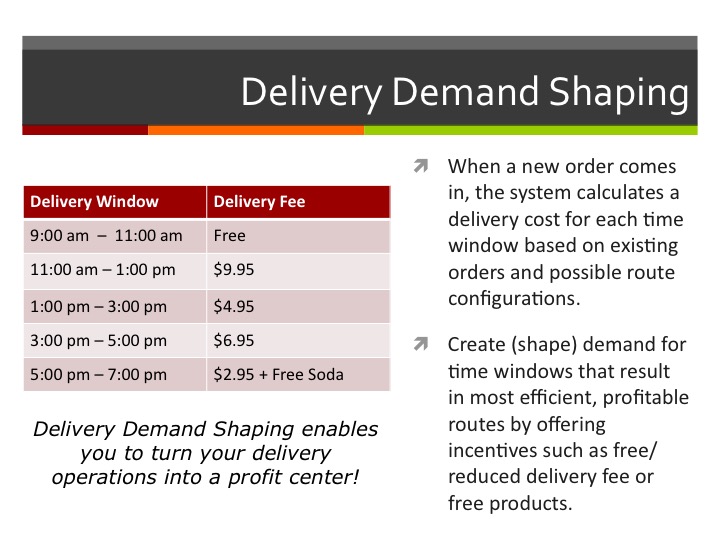Although many retailers and other companies are charging ahead with their same-day delivery offerings (see Amazon and Macy’s, for example), others are taking a step back or shutting down their efforts. For example, according to an article in Re/code last week, Google is shutting down its two Google Express delivery hubs in San Francisco and Mountain View, California. Here’s an excerpt from the article:
[Google Express] is not shutting down, but seems to be recalibrating a logistical plan it was testing in California [emphasis mine]…Rising costs of the drivers and vehicles are likely one rationale. According to multiple sources, Google is trying to curb these by outsourcing its delivery to other on-demand startups and has held initial talks with multiple companies, including Postmates and Flywheel.
This follows eBay’s recent announcement that it is shutting down eBay Now, its same-day delivery service.
Simply put, many companies are working on the same-day delivery puzzle, but they’re struggling to find the most important piece: doing it profitably.
In a recent webcast produced by Quintiq (a Talking Logistics sponsor) titled “Same-day Delivery: Shaping the Customer Experience,” I summarized the challenge companies are facing this way: on the one hand, companies have to manage the customer delivery experience, which includes enabling customers to select a convenient delivery date and time at the point of sale; providing customers with narrow delivery time window options (e.g., “between 9:00-11:00 am” versus “anytime between 12:00 – 6:00 pm”); and making the delivery on time with no issues related to the order or execution.

On the other hand, from an operations standpoint, companies need to create efficient, profitable routes and schedules that satisfy the delivery commitments made to customers while also minimizing the number of miles driven and maximizing the number of deliveries per route. Traditional approaches to slot assignment and route optimization, however, are not aligned with dynamic ordering and same-day delivery operations. What companies are often missing are Continuous Optimization and Delivery Demand Shaping capabilities.

What is Delivery Demand Shaping? It’s analogous to what made Dell so successful in the early 2000s, which Thomas Friedman describes in his book, The World is Flat:
[Demand shaping] works like this: At 10 am Austin time, Dell discovers that so many customers have ordered notebooks with 40-GB hard drives since the morning that its supply chain will run short in two hours. That signal is automatically relayed to Dell’s marketing department and to Dell.com and to all Dell operators taking orders.
If I happen to call to place my Dell order at 10:30 am, the Dell representative will say to me, ‘Tom, it’s your lucky day! For the next hour we are offering 60-GB hard drives for the notebook you want – for only $10 more than the 40-GB drive. And if you act now, Dell with throw in a carrying case along with your purchase…’
In an hour or two, using such promotions, Dell can reshape the demand for any part of any [computer] to correspond with the projected supply in its global supply chain.
Instead of hard drives, what customers are consuming in a delivery environment are delivery appointments. With Delivery Demand Shaping, when a new order comes in, the system calculates a delivery cost for each time window based on existing orders and possible route configurations. Companies can then “shape” demand for time windows that result in the most efficient, profitable routes by offering customers incentives, such as free/reduced delivery fee or free products, to select specific time slots.

A simple example: if my neighbor two houses down is choosing a delivery time for his groceries and I’m already having my groceries delivered at 4:00 pm today, incentivizing him to choose the 3:30 pm or 4:30 pm slot today would typically be the most efficient and cost-effective option from an operations standpoint.
I encourage you to watch the webcast for more insights on this topic and to see a demo of Delivery Demand Shaping and Continuous Optimization in action given by Robert Oliver, Solution Architect at Quintiq.
Simply put, Delivery Demand Shaping and Continuous Optimization are existing technologies that are critical to solving the same-day delivery puzzle – and in turning delivery from a cost center to a profit center.










